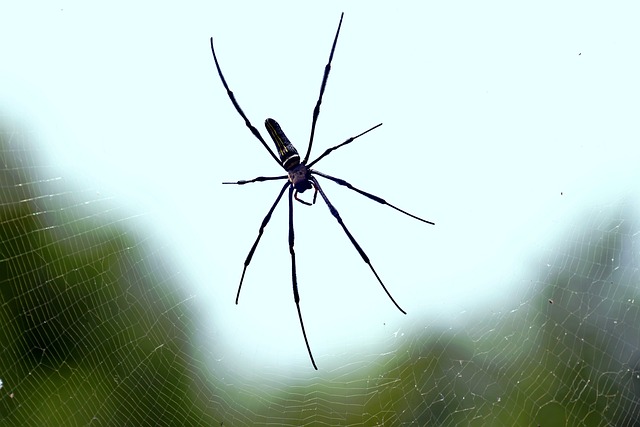Implementing effective professional spider control requires a multi-pronged strategy. Professionals conduct thorough inspections to identify entry points, seal vulnerabilities, and develop customized prevention plans. Regular maintenance, waste management, and eco-friendly treatments are key. Exclusion techniques, like sealing gaps and installing screens, disrupt spiders' navigation. Continuous monitoring by experts detects early signs of activity and allows for prompt action, ensuring a safer, spider-free living space throughout the year.
“Protect your space with tailored spider prevention plans designed for long-term effectiveness. This comprehensive guide explores effective strategies for professional spider control, from unraveling complex behaviors and identifying entry points, to developing robust prevention plans and implementing proven exclusion techniques. Discover the importance of regular maintenance and monitoring for sustained protection against these intricate invaders. Implement these steps today for a pest-free tomorrow.”
Understanding Spider Behaviors and Entry Points
Understanding spider behaviors is a crucial step in implementing effective long-term protection through professional spider control. Spiders are arachnids known for their intricate web-building and hunting strategies, often seeking shelter in dark, secluded areas. They are attracted to structures by sensing heat, vibrations, and chemical cues, entering homes or buildings through various entry points such as cracks, gaps under doors, and windowsills. Identifying these access points is essential; professionals employ meticulous inspections to pinpoint potential hiding spots and areas of vulnerability.
By understanding how spiders behave and where they tend to enter, tailored prevention plans can be designed. These strategies may include sealing off entry points with appropriate materials, implementing regular inspections, and adopting preventive measures like maintaining a clean environment, eliminating clutter, and using specific repellents recommended by spider control experts. Such proactive approaches ensure a safer, more comfortable living space, providing peace of mind year-round.
Developing a Comprehensive Prevention Strategy
Developing a comprehensive prevention strategy is key to achieving long-term protection against spiders. Professional spider control experts recommend a multi-faceted approach that combines several effective methods. This includes thorough inspections, identifying and sealing entry points, proper waste management, and targeted treatments using safe, environmentally friendly products. By integrating these practices into your home or business routine, you create an unwelcoming environment for spiders, significantly reducing their presence over time.
Customized plans are tailored to address specific concerns and locations, ensuring that no corner is left unchecked. Regular maintenance and follow-up visits from professionals guarantee ongoing protection. This proactive approach not only prevents spider infestations but also promotes a healthier, more comfortable living or working space.
Implementing Effective Exclusion Techniques
Implementing effective exclusion techniques is a cornerstone of any successful long-term spider prevention plan. Professionals in spider control understand that preventing spiders from entering your space is often more effective than relying solely on eliminating existing populations. This involves a multi-layered approach, starting with meticulous inspection to identify potential entry points and weak spots in your structure’s defenses. Once these areas are pinpointed, specific exclusion methods can be employed, such as sealing gaps around pipes, wiring, and doors with weatherstripping or caulk, and installing fine-mesh screens over vents and openings.
These techniques create a physical barrier that prevents spiders from crawling inside, disrupting their ability to navigate and establish territories. Regular maintenance checks are vital to ensure these barriers remain intact and effective over time. By combining exclusion with other professional spider control methods, you can achieve and maintain a spider-free environment, providing peace of mind and ensuring your living or working space remains safe and comfortable.
Regular Maintenance and Monitoring for Longevity
Regular maintenance and monitoring are key components in any effective long-term spider prevention plan, especially when handled by professional spider control experts. Regular inspections allow for the early detection of any signs of spider activity or potential entry points into your property. This proactive approach ensures that even the smallest issues can be addressed promptly, preventing spiders from establishing a comfortable habitat and breeding ground.
Through continuous monitoring, professionals can identify specific spider species, their behavior patterns, and preferred habitats within your property. Armed with this knowledge, tailored strategies can be implemented to suit the unique needs of each case. Regular maintenance also involves routine cleaning, sealing of entry points, and the removal of potential food sources or hiding places, significantly reducing the likelihood of future spider infestations.
In implementing a customized spider prevention plan, understanding spider behaviors, identifying entry points, developing comprehensive strategies, employing effective exclusion techniques, and conducting regular maintenance and monitoring are key components for achieving long-term protection. By combining these steps with professional spider control methods, you can create a safe and comfortable living or working environment that minimizes spider infestations. Remember, proactive measures ensure sustained results in the battle against these arachnids.
